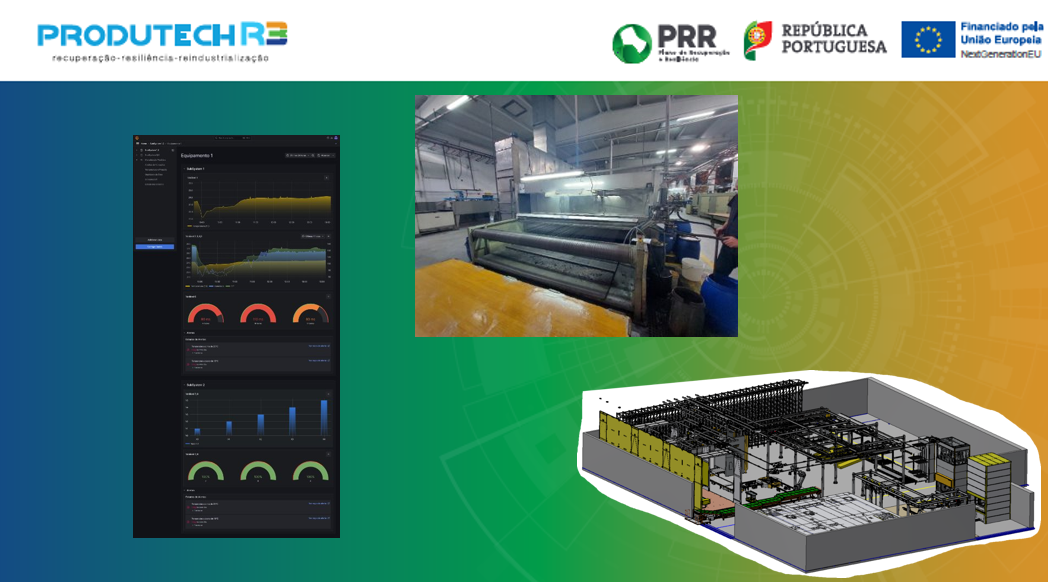Industry-UP

Transforming Project focused on developing a unified framework that extends the lifecycle of industrial equipment.
WP16 is focused on developing a unified framework that extends the lifecycle of industrial equipment.
This includes studying and developing methodologies that look at the design, production, and use of industrial equipment and how different strategies can prolong their useful life, integrating advanced technologies such as Digitalization, Machine Learning, Predictive Maintenance, and Additive Manufacturing, as well as higher-level approaches such as reconfiguration and repair. This project, known as Industry-UP, aims to enhance efficiency and sustainability in industrial operations. The involved entities include: • Research & Development Entities (ENESII): INEGI (WP Coordinator); CCG; ISQ; CATIM; CENTIMFE; CTIC; FAN3D. • Industrial Partners: Moliporex, Pibra, Adira, CEI, CHETO, and Derma Leather A central outcome of Industry-UP is an online digital platform (whose back-end and interface are being developed by Moliporex) that connects to industrial equipment, processes real-use data, and provides tools to help businesses and consumers make informed decisions. In the Industry-UP project, this platform is being developed to interface with five demonstrator machines, developed by one of five industrial partners from diverse sectors, ensuring broad applicability across industries. These demonstrators are:
• Pibra: Automated high-performance intra-logistic system (with several independent sub-systems)
• Adira: PA16040 Hydraulic press brake
• CEI: CNC Stone cutting and machining mill
• CHETO: IXN CNC Deep hole drilling machine, with milling
• Derma Leather: Leather painting machine with rotary spray pistol system Efforts in equipment modernization and digitization have been undertaken in the first phase of the project, providing the underlying framework that allows the direct collection of data from the demonstrator machines and its direct communication to the platform for processing and storage.
This included collecting requirements and specifications from each industrial partner. In parallel, the cloud infrastructure of the platform was defined and instantiated, taking into account the data and connection requirements defined earlier, as well as cybersecurity considerations.
A first version of the user interface was subsequently developed, allowing for the first tests and validation of the platform. Feedback from the industrial partners will be collected for incremental improvements during the duration of the project. Among the tools provided by the Industry-UP platform are Predictive Maintenance algorithms that help identify issues early, minimize downtime, improve performance, and gain a better understanding of the underlying patterns of use that these machines are subjected to in real-world shop floors. This understanding can be used not only during the "normal" lifetime of the equipment but also provide invaluable insights for future updates and redesigns.
The current implementation of these algorithms processes real data from the demonstrators, in order to tailor the analysis to each particular reality and allowing for some customization. However, the objective is that the core developments are general enough to be applied to many use cases beyond the project.
These machine-learning algorithms are currently in development by INEGI and CCG. The project also includes the repair and upgrade of components through additive manufacturing to extend their useful life, taking into account economic and environmental issues. Nine case studies are being conducted across some of the partners (CEI, MOLIPOREX, and PIBRA). These case studies involve redesigning parts and subsystems of equipment for additive manufacturing, utilizing both metallic and polymer technologies (WAAM, L-PBF, FFF, and SLA).
The process encompasses steps like design optimization, material selection, prototyping, and testing. The design optimizations are tailored to the additive manufacturing method and the specific functions of the parts and subsystems. Industry-UP helps businesses predict, plan, and manage equipment lifecycles, thereby reducing waste and extending equipment lifespan. The integrated approach combining different technologies ensures that the project aligns with innovation, sustainability, and efficiency to drive industrial transformation and extend equipment lifecycles.